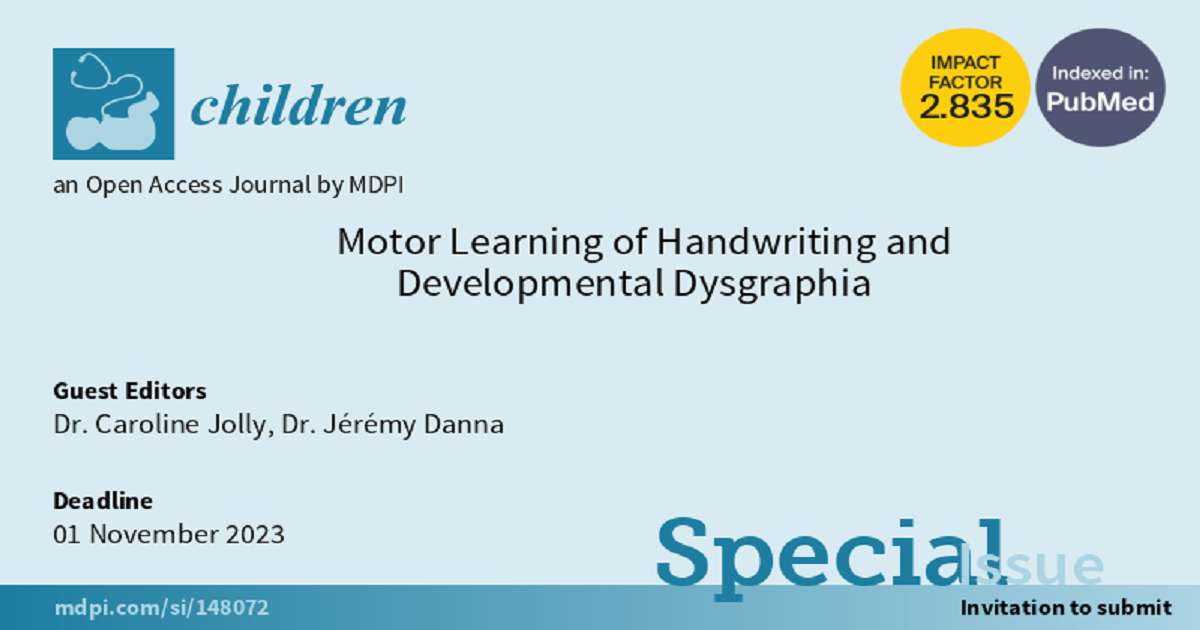Motor Learning of Handwriting and Developmental Dysgraphia
A special issue of Children (ISSN 2227-9067). This special issue belongs to the section "Global and Public Health".
Deadline for manuscript submissions: closed (1 November 2023) | Viewed by 16231

Special Issue Editors
Interests: handwriting; child development; dysgraphia
Special Issue Information
Dear Colleagues,
Learning to write by hand is a complex activity which requires years of formal training before complete mastering, and which is essential for the acquisition of other skills, such as grammar. However, 5% to 10% of children have difficulties with and do not fully master handwriting. These handwriting deficits, characterized by poor quality and/or speed, are referred to as dysgraphia. Since handwriting deficits can seriously impact children’s academic achievement, it is important to identify and handle them early.
This Special Issue will focus on the motor aspects of handwriting learning in typically developing children, and of handwriting deficits in children with specificities and/or neurodevelopmental disorders.
We invite you to contribute to this Special Issue to increase the knowledge on dysgraphia and handwriting on fundamental, educational, and clinical aspects, and to improve the management of handwriting deficits, namely in the field of diagnosis and rehabilitation. Both original research articles and reviews will be considered for publication.
Dr. Caroline Jolly
Dr. Jérémy Danna
Guest Editors
Manuscript Submission Information
Manuscripts should be submitted online at www.mdpi.com by registering and logging in to this website. Once you are registered, click here to go to the submission form. Manuscripts can be submitted until the deadline. All submissions that pass pre-check are peer-reviewed. Accepted papers will be published continuously in the journal (as soon as accepted) and will be listed together on the special issue website. Research articles, review articles as well as short communications are invited. For planned papers, a title and short abstract (about 100 words) can be sent to the Editorial Office for announcement on this website.
Submitted manuscripts should not have been published previously, nor be under consideration for publication elsewhere (except conference proceedings papers). All manuscripts are thoroughly refereed through a single-blind peer-review process. A guide for authors and other relevant information for submission of manuscripts is available on the Instructions for Authors page. Children is an international peer-reviewed open access monthly journal published by MDPI.
Please visit the Instructions for Authors page before submitting a manuscript. The Article Processing Charge (APC) for publication in this open access journal is 2400 CHF (Swiss Francs). Submitted papers should be well formatted and use good English. Authors may use MDPI's English editing service prior to publication or during author revisions.
Keywords
- handwriting
- motor learning
- dysgraphia
- diagnosis and rehabilitation
- neurodevelopmental disorders







